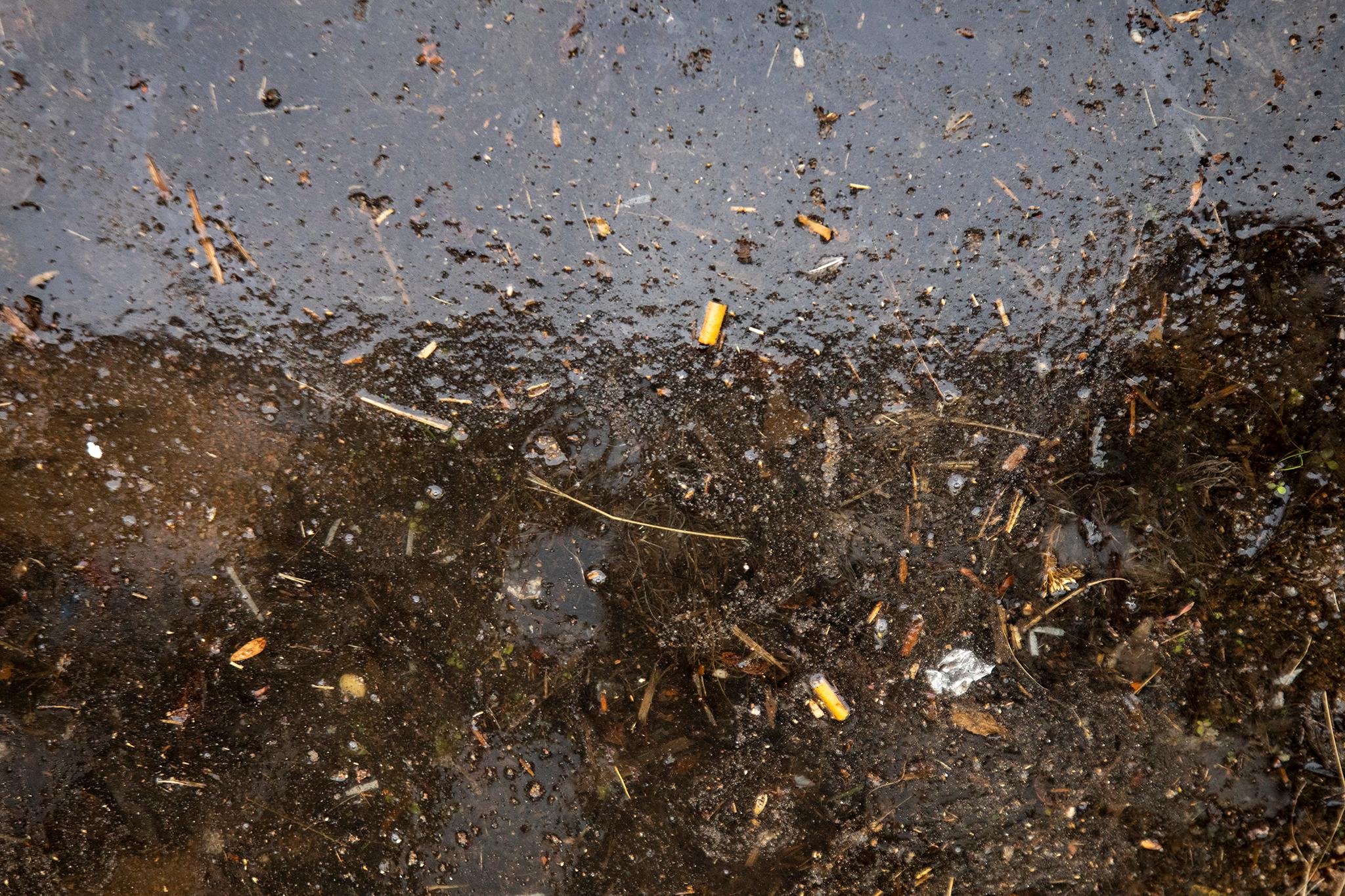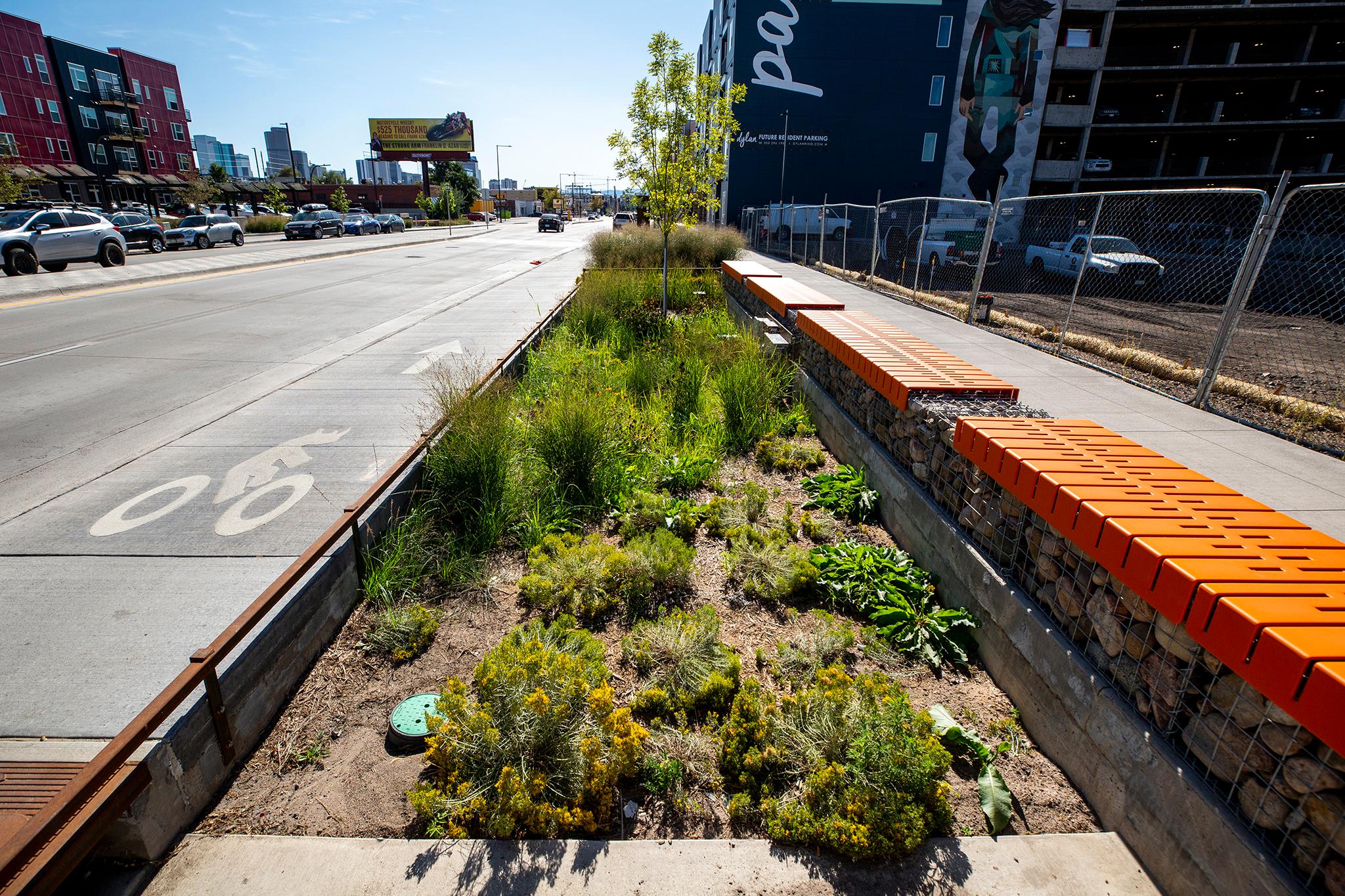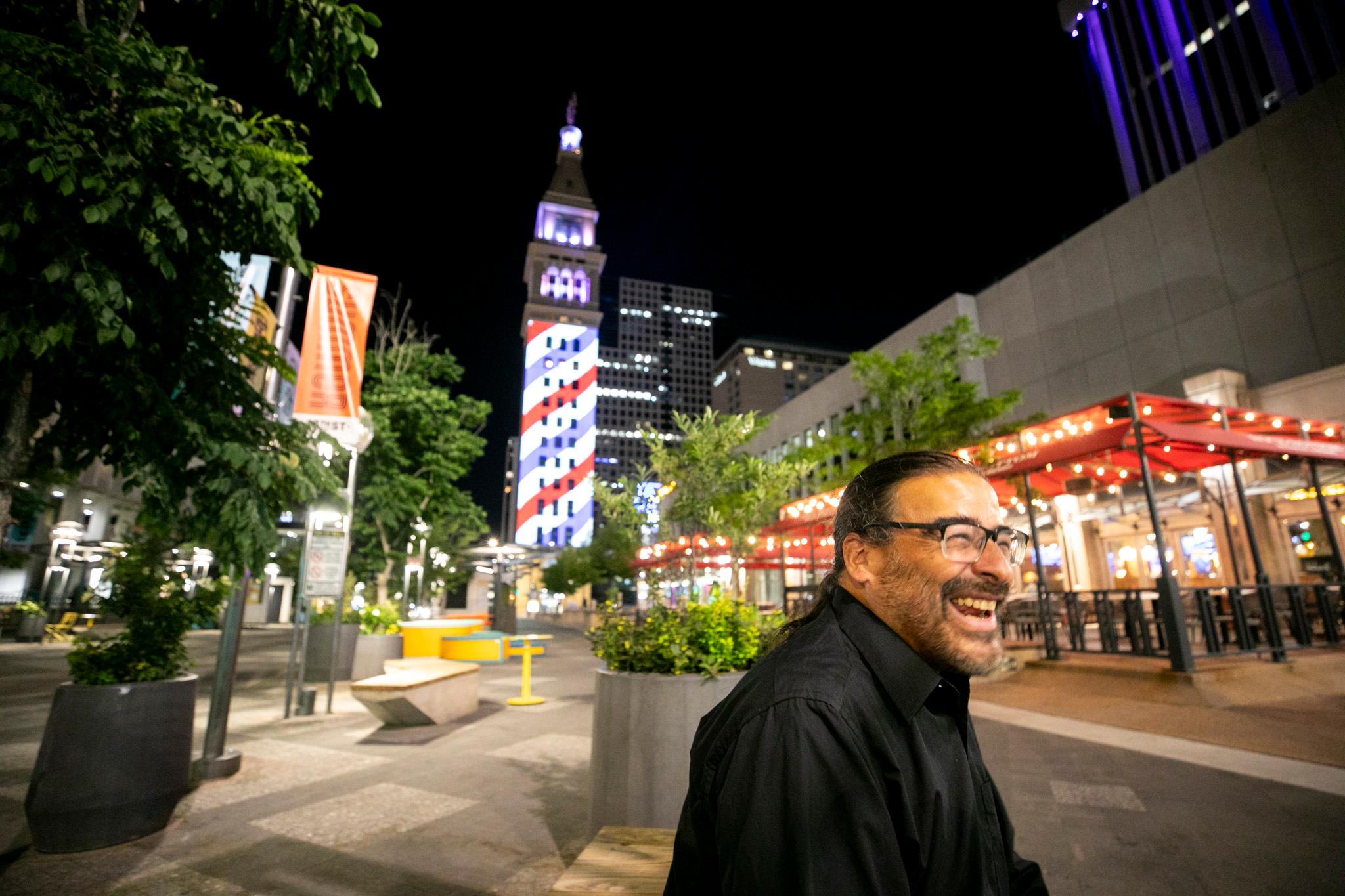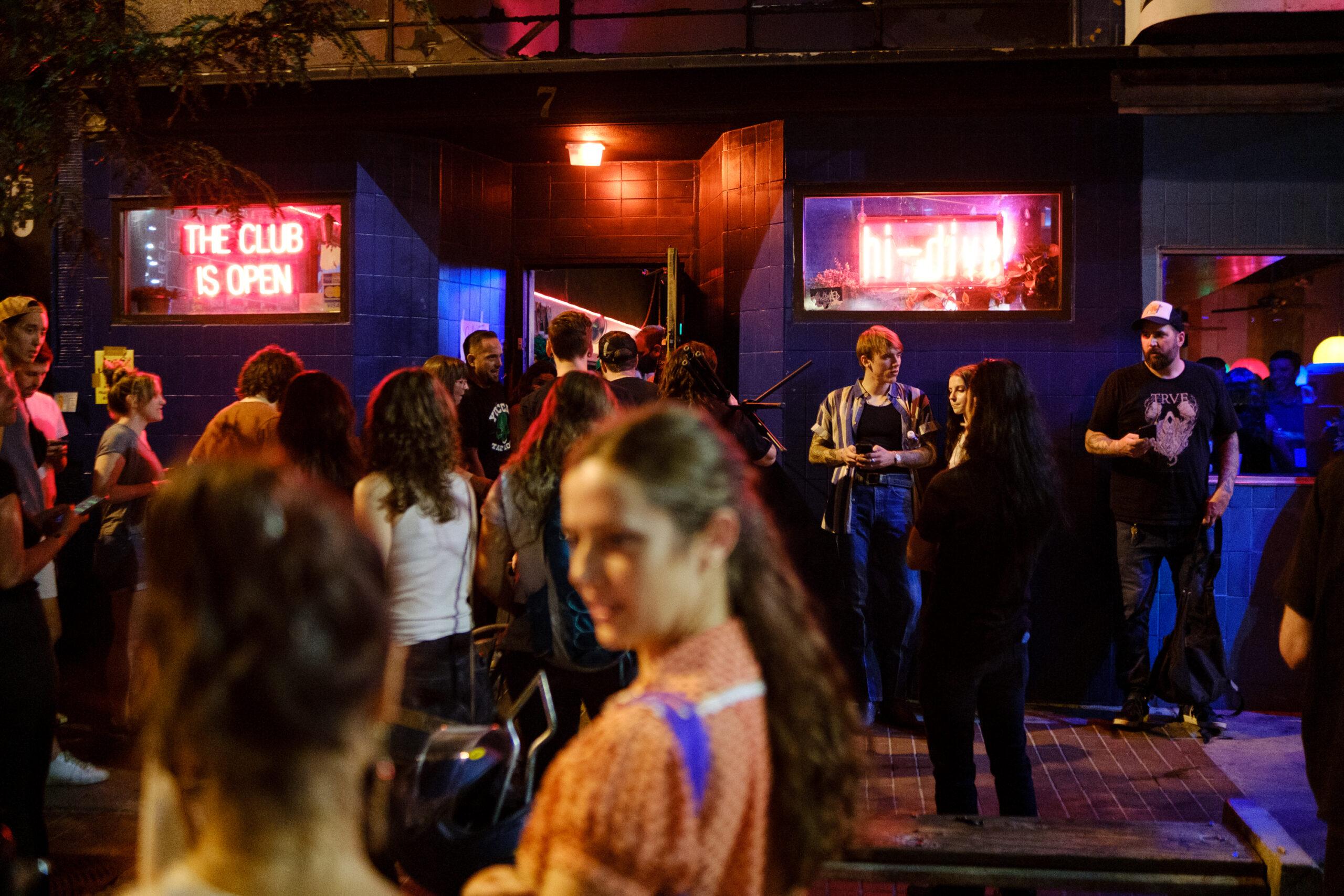Rainwater on Brighton Boulevard used to fall onto the street and flow into gutters, sweeping cigarette butts, dog poop and other contaminants into the sewer system and the South Platte River. Some of that gunk still makes its way into unwanted places, but it's a lot less since Brighton's rebirth as a modern, functional street with green infrastructure.
Trees, plants, grasses, dirt, sand and these things called bioretention cells were a huge part of the $32 million makeover, even though the hardscape -- sidewalks, medians, bike lanes -- is more visible.
We usually think about infrastructure in terms of concrete and other manmade materials. But green infrastructure, including 1,500 trees and shrubs on Brighton, cleans the water and the air while cooling down the street in a city where environmental workers are bracing for higher temperatures on our urban heat island.
The concept of a tree providing shade is a pretty simple one to grasp.
"We all know the difference between standing under a tree and not standing under a tree on a hot day," said Sarah Anderson, the city's green infrastructure program manager.
So is the idea of greenery and dirt filtering dirty water, which is what the bioretention cells -- let's call them rainwater planters from now on -- do.
"What we're trying to do is replicate pre-development hydrology, which is, you know, before we paved everything," said Chris Olson, a consultant for the city with Wright Water Engineers.


Olson stood next to a 15-foot-long planter between the sidewalk and the bike lane Thursday morning and watched as 2,500 gallons of water flowed from a water truck's hose, along the street edge, and into the sunken planter filled with shrubs (some have trees, which also trap rainwater). Denver Public Works and Denver Public Health and Environment were testing the stormwater planter, which is a relatively new addition to the city's infrastructure toolbox.
As the rainwater planter filled, water buoyed street garbage, which will remain trapped in the planter until maintenance crews pick it up. "That's an unfortunate byproduct," said Brandt Schiche, an environmental scientist with Tri Hydro who helped with the test. But it's better than litter in the river.


The water drains through layers of plants, soil, sand and other scrubbers before making it to an underground outflow pipe. About 80 percent of the runoff water -- 2,000 gallons -- that enters the planter will soak back into the ground instead of the sewer system or the river, Olson said. Meanwhile, the plants get watered.
Thursday's test, the third since the infrastructure was installed along Brighton, replicated the type of storm that's common in Denver, or a "one-year storm."
Green infrastructure is far from ubiquitous in Denver, but there's an environmental argument to make it that way.
Brighton is home to more than 100 rainwater planters, but it's the only street in Denver with such a robust system.
Many small pieces of green infrastructure, including trees, represent a new way of thinking about urban drainage projects, said Austin Troy, chair of the University of Colorado Denver's Urban and Regional Planning.
"It's commonly accepted across the country now that these types of treatments taken together are considered to be definitely a preferable alternative as opposed to the standard big detention basins and culverts," Troy said.
Denver uses a manual created by Public Works called Ultra-Urban Green Infrastructure Guidelines to steer such investments. Troy said cities around the country use it, too.
The government sees Brighton as a model for the rest of Denver, said Public Works' Anderson.
"Brighton is a good example of where we'd like to go," she said. "Green infrastructure along roadways is important because, as you can imagine, they are one of our dirtier sources of runoff, and so it's a priority to treat street drainage first."
Public Works installed a similar rainwater planter at 21st Street and Broadway when it installed new biking and walking paths. It's not working well, at least so far. The disappointing result goes to show how fussy the science of retrofitting urban hardscapes with natural elements can be.
"Let's just say that the treatment's not as effective as we were hoping for," said Jon Novick, an environmental administrator with the city. "With that said, it's a new facility. It takes a little while for everything to kind of stabilize and start functioning properly."
Anderson said having green infrastructure on every street would be "a dream." But funding stands in the way. Federal Boulevard will be the next street to receive the green treatment, but the city is only 60 percent done with the design phase.











